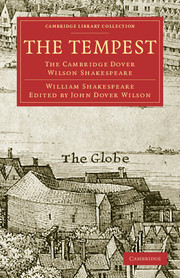INTRODUCTION: TEXTUAL
Published online by Cambridge University Press: 07 September 2010
Summary
Within this last decade the study of Shakespearian texts has been given a new trend by three distinct though closely related discoveries.
The first is that of Mr A. W. Pollard, originator of a new scientific method—critical Shakespearian bibliography. In a series of works (Shakespeare Folios and Quartos, 1909; King Richard II, a New Quarto, 1916; Shakespeare's Fight with the Pirates, 1917, etc.) Mr Pollard has demonstrated that dramatic MSS which reached the printer's hands in Shakespeare's day were generally theatrical prompt-copy; that many of these are likely to have been in the author's autograph; and that, therefore, the first editions of Shakespeare's plays—the quartos in particular—possess a much higher authority than editors have hitherto been inclined to allow them.
The second discovery, originally made by Mr Percy Simpson (Shakespearian Punctuation, 1911), though since developed by Mr Pollard, affects the vitally important question of the stops in the Folio and Quartos, which are now seen to be not the haphazard peppering of ignorant compositors, as all previous editors have regarded them, but play-house punctuation, directing the actors how to speak their lines.
The third and most sensational discovery of all came to light in 1916, when Sir Edward Maunde Thompson boldly claimed, in his Shakespeare's Handwriting, that one of several hands found in the confused and partially revised manuscript play Sir Thomas More, now in the British Museum, was that of Shakespeare himself, and that therefore we now have three pages of authentic Shakespearian ‘copy’ in our possession.
- Type
- Chapter
- Information
- The TempestThe Cambridge Dover Wilson Shakespeare, pp. xxix - xlivPublisher: Cambridge University PressPrint publication year: 2009First published in: 1921

